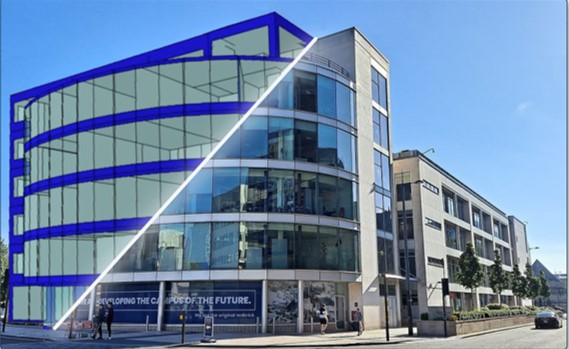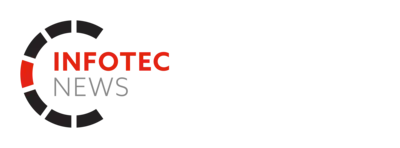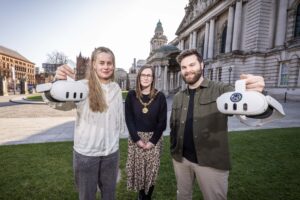Virtual environment and live data demonstrate impact of refurbishment of university building: 23% reduction in energy and savings of £25,000 over eight-month period last year
The University of Liverpool is pioneering the use of new virtual environment modelling by climate tech company IES to improve operational energy performance. The IES model also continues to assess the impact of a recent refurbishment of the building’s heating, ventilation and air conditioning systems (HVAC), demonstrating its value for money and benefits to the wider environment.

Image courtesy IES
Initially, a digital model of the university building was produced to show energy flow through its rooms and other. This ‘digital twin’ of the physical building drew on data from 2019 (ie pre-Covid) to establish a baseline of energy use. This baseline was then used to predict the range of savings to be made from different refurbishment options. The team responsible for the project were then able to choose the best option, which were expected to offer energy savings of some 14%.
Once refurbishment was completed and the building reopened for use, IES upgraded the digital model, making it more accurate by feeding in live data from building management systems (BMS) and energy meters. The model now recalibrates every hour based on this new input.
The university’s facilities management team can use this very accurate digital twin to monitor the building and improve energy efficiency. The simulated baseline provides them with a benchmark by which to track performance and gain insights on ways to improve, as part of wider efforts to decarbonise. They can also measure and verify the ongoing impact of the refurbishment.
The results are very encouraging. The digital twin shows that over the period April to December 2023, the HVAC refurbishment has led to a 23% reduction in energy consumption – equivalent to savings of £25,000. This is much more than initially predicted, which IES put down to the greater accuracy of the second phase of the modelling system.
Tony Small, Head of Engineering Services at the University of Liverpool, says: ‘Working with IES on this project has given us detailed insight into the impact of our refurbishment work and will enable us to continually monitor and update our operational systems to ensure that the building is operating efficiently. With building use, occupants and settings altering frequently, having access to this level of data means we can make informed decisions on improvements and ensure optimum performance doesn’t come at the expense of occupant comfort.’
Valeria Ferrando, Associate Director at IES, adds: ‘Improving the operation of buildings is key to mitigating energy and climate risk, cutting costs and emissions, meeting sustainability objectives and increasing resilience, not to mention being a vital part of a successful net zero strategy. However, you can’t improve what you can’t measure and there was a gap in the market for a tool that can connect live operational data, providing continuous insights and giving energy management teams a holistic view of how their building is performing. IES Live is a real game-changer, maximising the impact of a digital twin which leverages a world-class simulation engine and placing this power in the hands of those who need it. It’s been a pleasure to work with the University of Liverpool to pilot IES Live and enable them to evaluate the effectiveness of their retrofit measures, verify predicted results and allow informed decisions to be made on building improvements. We look forward to replicating the work across the campus.’
In related news:
UK technology powers converted First York electric bus fleet
















Leave a Reply